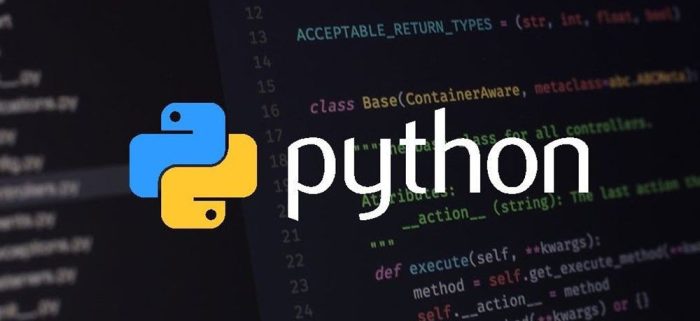Introduction to python
Python is a high-level, general-purpose, interpreted programming language known for its simplicity, readability, and versatility. Created by Guido van Rossum and first released in 1991, Python’s design philosophy emphasizes code readability with its notable use of significant whitespace indentation. Python allows programmers to express concepts in fewer lines of code than would be possible in languages such as C++ or Java.
Pytthon is dynamically typed and supports multiple programming paradigms, including object-oriented programming, functional programmin, and structured programming (especially procedural).

Python is a garbage-collected programming language. This means it comes equipped with a special type of automatic memory management, where the garbage-collector aims to reclaim any memory that was once allocated by the program but is now no longer referenced (”garbage memory”). The garbage-collection feature relieves the programming from having to do this job manually.
Python’s combination of simplicity, power, and versatility has led to its adoption across a broad range of industries and disciplines. From web development and data analysis to automation and education, Python has become an essential tool for programmers and companies around the world. Whether you’re new to programming or an experienced developer looking to expand your skill set, Python offers a rich programming environment and community to support your goals.
Key features of Python
Ease of learning: Python’s syntax is designed to be intuitive and resembles the English language, which makes it an excellent choice for beginners in programming. Its clear syntax allows developers to focus on solving problems rather than putting a lot of effort into learning how to understand the programming language itself. It often use English keywords where other programming language would use punctuation.
Easy to read: Python was designed to be easy to read. It is renowned for being visually uncluttered.
Whitespace identation: Unlike many other programmin language, Python does not use curly bracket to delimit blocks. Instead of curly brackets or keywords, Python uses whitespace indentation to delimit blocks. A decrease in indentation signifies the end of the block. An increase in identation follows certain statements. The recommended indent size is four spaces. Semicolons after statements is permitted, but rarely used. Compared to both C and Pascal, Python has fewer syntactic expectations and special cases.
Versatility: Python is a multi-paradigm language that supports procedural, object-oriented, and to some extent, functional programming styles. It’s used in various domains, including web development, data analysis, artificial intelligence (AI), scientific computing, and more.
Extensive standard library: Python comes with a large standard library that includes modules and functions for a wide range of tasks. This library can handle everything from file I/O to system calls, internet protocols, and web services, significantly reducing the need for external libraries. Because of this, Python is sometimes reffered to as having ”batteries included”.
Vibrant community: Python has a large and active community that contributes to a vast ecosystem of libraries, frameworks, and tools. This community support makes Python suitable for nearly every task and ensures resources are readily available for learning and problem-solving.
Cross-platform compatibility: Python is cross-platform, meaning Python programs can run on Windows, macOS, Linux, and other systems without requiring changes to the code. This makes it a preferred choice for developing applications that need to operate across different computing environments.
Popular uses
Web development: With frameworks like Django and Flask, Python is a popular choice for building web applications. These frameworks offer ready-to-use components that can speed up the development process.
Data analysis and machine learning: Python’s powerful libraries, such as NumPy, pandas, Matplotlib, and Scikit-learn, have made it the language of choice for data scientists and researchers. These tools allow for complex data manipulation, analysis, visualization, and the development of machine learning models.
Automation and scripting: Python is often used to automate repetitive tasks and processes, such as data gathering, testing software, and system administration tasks. Its simplicity makes writing scripts to automate small tasks quick and straightforward.
Scientific computing: Python is widely used in scientific and mathematical computing, with libraries like SciPy and IPython offering advanced computational capabilities and an interactive environment for data analysis.
Education: Python’s simplicity and readability have made it a favored language for teaching programming. It is widely used in introductory programming courses and by self-learners.
History
Python was conceived in the late 1980s, when Guido van Rossum began working on something that could succeed the ABC programming language. At the time, van Rossum was employed by the Centrum Wiskunde & Informatica (CWI) in the Netherlands.
The first released version of Python was the Python 0.9.0 which came out in 1991. It would take nine years before Python 2.0 became available, followed yb Python 3.0 in 2008. Python 3.0 is not completely backward-compatible with earlier versions.
Van Rossum was lead developer for Python from the start to July 2018. In early 2019, Python core developers elected a five-member Steering Council to take over the leadership role.
At the time of writing, the most receant release of Python is the 3.12, and Python 3.12 and 3.11 are the only ones with active support (as opposed to just security support).
This article was last updated on: March 25, 2024
